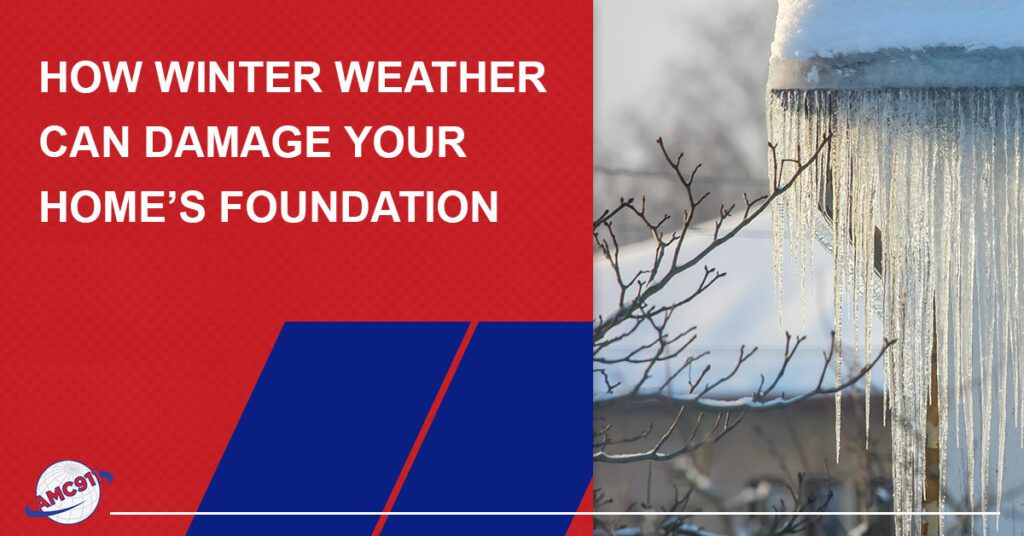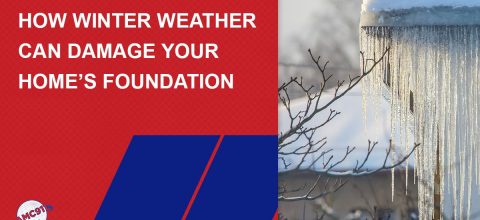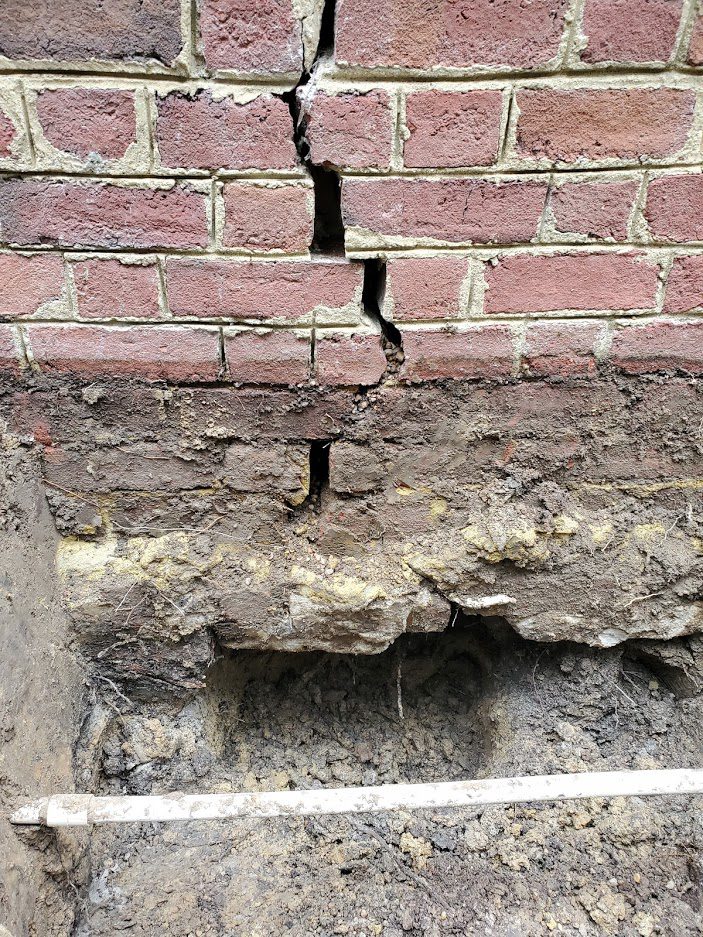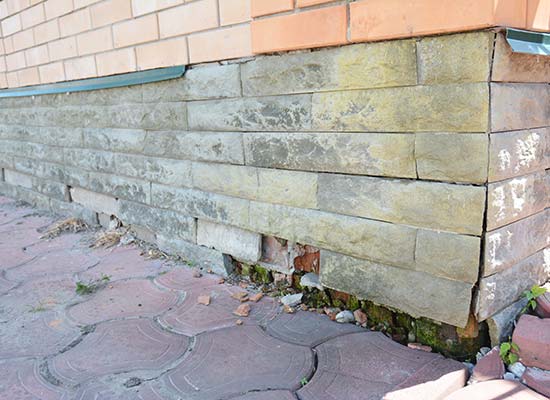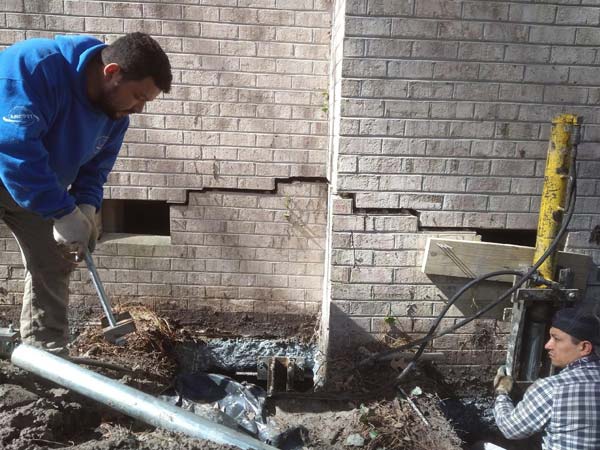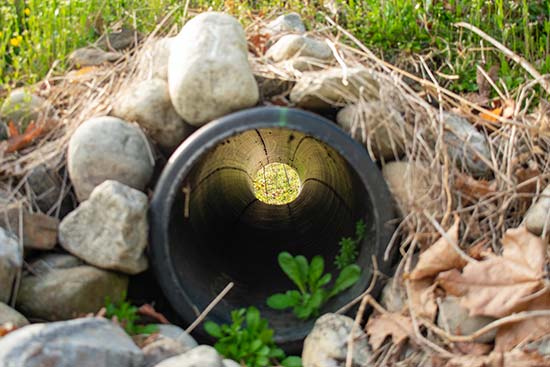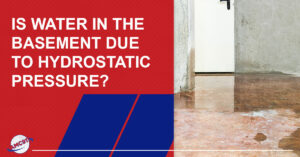Living in the Hampton Roads area means living through the changing of the seasons. Having four seasons also means dealing with severe temperature swings from blazing hot to freezing cold. Humans have the ability to dress and prepare for these changes. Buildings and permanent structures do not. Your house is built with a foundation buried underground in soils that are porous, like a sponge. Different types of soils expand and contract at different rates when water is in them. In the summer, dry weather can result in soil shrinkage. In the winter, water trapped in the soil can freeze. Water expands when it freezes so the soil also expands. These constant cycles of expanding and contracting are the reason foundations fail.
Freezing Ground
In this area, soil is going to retain moisture during most of the seasons. During the winter, it gets cold at night and the ground freezes. The soil around your house freezes. As the ground freezes the expanding water pushes upward, resulting in what is called frost heave. This condition is usually seen on sidewalks, driveways and patios first. As time goes on, this up and down motion can create cracks or settling.
These affected areas then need to be lifted to become level again. But soil doesn’t always lift upward. If confined, it will also expand side to side, putting pressure on the foundation. This is the case weather you have a high or low crawl space, or even a basement. No home is exempt from this scenario.
Foundation Issues
As you can imagine, years or decades of soil expanding into a foundation will have an impact on the structural integrity of the concrete or cinder block. In concrete walls, cracks form as the wall is pushed beyond its limits. Water then enters the home if the crack is wide enough. Now the small crack is working on becoming a larger crack. Crack repairs need to be done correctly by injecting them with polyurethane. This prevents water from entering the crack altogether.
Another common problem is when pipes are drilled through the wall to get to an addition, lamp post or garage. Freezing ground is working on these pipes, up and down, weakening them until they fail to seal at the wall or even allowing water to enter the pipe.
Foundations made from cement block are actually more at risk from damage by frost. To understand why, you have to look at the way a cement, or cinder, block wall is made. Block walls are made by stacking hollow blocks on top of one another with cement or mortar in between them. While they hold up very well to pressure applied from the top pushing down, the weight of the house structure, they are not very strong laterally. The most common issue is tipping where the top courses start to bulge inward, or simply begin to crumble. A line is commonly seen at this joint indicating the shift. If allowed to continue it can get worse and require bracing, straightening, or worse yet new footings/foundation to be re-built.
Common Winter-Related Foundation Problems
Frost Heave
Frost heave occurs when water in the ground freezes and causes the soil to expand and push upward on a foundation. Later, when the soil thaws, the foundation sinks back down. Over time, this movement under the foundation can cause cracks.
Frozen Discharge Line
A frozen discharge line on a sump pump is a common problem during the winter, particularly in colder climates where low temperatures can cause water in the line to freeze. This often happens when the discharge line is outdoors and exposed to freezing temperatures, with insufficient insulation or protection against the elements. As a result, the sump pump cannot function properly and may fail to keep up with water buildup in the sump pit, leading to potential flooding.
Ice Dams
Ice dams are a common phenomenon that occurs on roofs during the winter. They’re formed when the snow on the roof starts to melt due to heat escaping from the interior of the building. The melted snow then refreezes along the roof’s edge. This creates a wall of ice that blocks the water from flowing down the roof, leading to possible leaks into the structure and water damage.
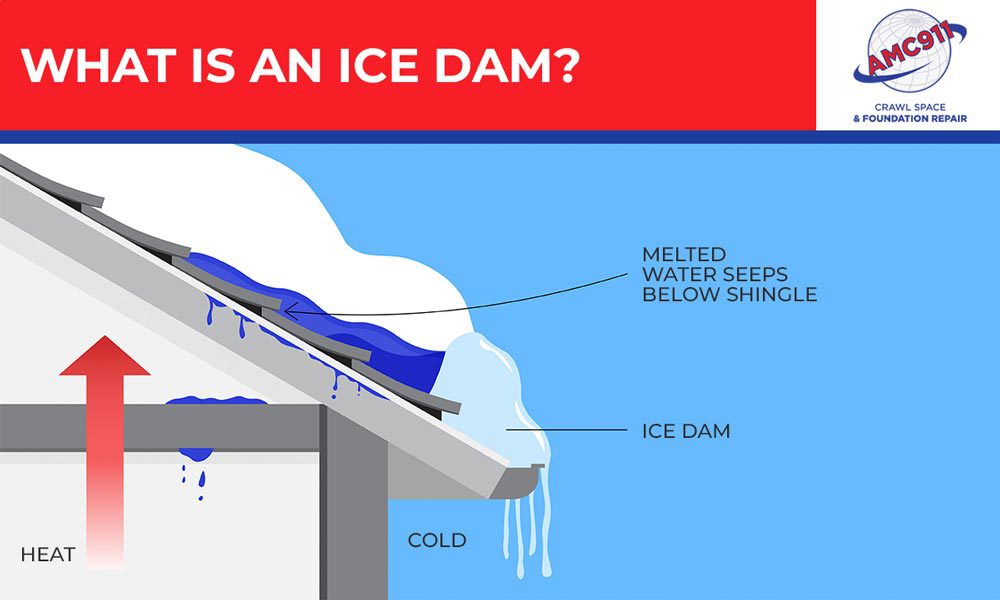
What can I do?
Once your foundation has damage, it needs to be repaired. Cracks need to be properly fixed but it takes a trained eye to see the story the foundation is telling. To help keep this damage from happening, preventative steps can be made to help your foundation. Water management is key to a foundation’s health. Moving downspout water away from the foundation by using underground water extensions, French drains. Take a close look at the grade around your house. Are there areas of ponding water than can be re-graded to direct water away? Can yard drainage be installed to help move water to a better location?
If you would like one of our foundation repair and water management experts evaluate your home, schedule an appointment online or give us a call to set up a free estimate.

